Juvenile
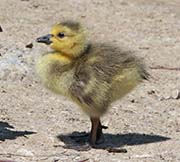
Large feet and legs for the size of the bird
04/10/2008 - Miller-Knox Regional Shoreline, Richmond, CA
Large feet and legs for the size of the bird
04/10/2008 - Miller-Knox Regional Shoreline, Richmond, CA
|

Sharing
04/10/2008 - Miller-Knox Regional Shoreline, Richmond, CA
Sharing
04/10/2008 - Miller-Knox Regional Shoreline, Richmond, CA
|
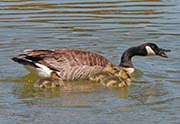
Protecting her babies
04/10/2008 - Miller-Knox Regional Shoreline, Richmond, CA
Protecting her babies
04/10/2008 - Miller-Knox Regional Shoreline, Richmond, CA
|

04/22/2008 - Heather Farms; Walnut Creek, CA
04/22/2008 - Heather Farms; Walnut Creek, CA
|
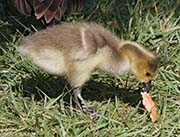
05/01/2008 - Golden Gate Park, San Francisco, CA
05/01/2008 - Golden Gate Park, San Francisco, CA
|

Note the one with an orange bill
05/09/2008 - Golden Gate Park, San Francisco, CA
Note the one with an orange bill
05/09/2008 - Golden Gate Park, San Francisco, CA
|

06/04/2008 - Laguna Grande Park, Monterey, CA
06/04/2008 - Laguna Grande Park, Monterey, CA
|

Slightly older juvenile
04/22/2008 - Heather Farms; Walnut Creek, CA
Slightly older juvenile
04/22/2008 - Heather Farms; Walnut Creek, CA
|

Some older juveniles
05/09/2008 - Golden Gate Park, San Francisco, CA
Some older juveniles
05/09/2008 - Golden Gate Park, San Francisco, CA
|

06/01/2008 - Middle Harbor Park; Oakland, CA
06/01/2008 - Middle Harbor Park; Oakland, CA
|
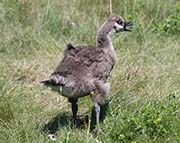
06/01/2008 - Middle Harbor Park; Oakland, CA
06/01/2008 - Middle Harbor Park; Oakland, CA
|

04/21/2010 - Gilbert Riparian Preserve, Gilbert, AZ Institute, AZ
04/21/2010 - Gilbert Riparian Preserve, Gilbert, AZ Institute, AZ
|
Adult

02/11/2008 - Miller-Knox Regional Shoreline, Richmond, CA
02/11/2008 - Miller-Knox Regional Shoreline, Richmond, CA
|

02/11/2008 - Miller-Knox Regional Shoreline, Richmond, CA
02/11/2008 - Miller-Knox Regional Shoreline, Richmond, CA
|

04/26/2008 - Hayward Shoreline; Hayward, CA
04/26/2008 - Hayward Shoreline; Hayward, CA
|
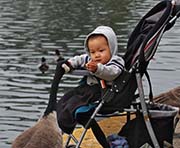
Feeding time
10/31/2008 - Lake Merritt, Oakland, CA
Feeding time
10/31/2008 - Lake Merritt, Oakland, CA
|

09/05/2007 - Miller-Knox Regional Shoreline, Richmond, CA
09/05/2007 - Miller-Knox Regional Shoreline, Richmond, CA
|

10/30/2013 - Martin Luther King Jr Regional Park; Oakland, CA
10/30/2013 - Martin Luther King Jr Regional Park; Oakland, CA
|

09/05/2007 - Miller-Knox Regional Shoreline, Richmond, CA
09/05/2007 - Miller-Knox Regional Shoreline, Richmond, CA
|

11/05/2007 - Albany Bulb; Albany, CA
11/05/2007 - Albany Bulb; Albany, CA
|
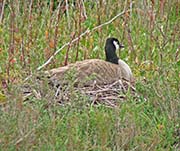
Notice the nest
04/21/2007 - Hayward Shoreline; Hayward, CA
Notice the nest
04/21/2007 - Hayward Shoreline; Hayward, CA
|
Diet:
They dabble in water for aquatic vegetation or graze in fields and large lawns for
grain and grass.
Courtship:
Canada Geese usually mate for life.
Nesting:
Nests are either built singly or in colonies.
Nests are usually elevated so visibility is good.
The female does most of the nest building.
The male's role is to guard her and the nest.
The protection actions include head pumping, an opened bill with tongue raised (see picture below),
hissing, honking, and vibrating neck feathers.
The nests are built on the ground and are made up of vegetation lined with down and feathers.
Eggs are creamy white and the incubation period is 25-28 days.
Habitat and Range:
They are mainly a North American bird that breeds in northern Canada and Alaska.
They winter in the rest of the U.S. and into Canada.
They prefer being near water (rivers, lakes, ponds, etc.)
and can be found in many urban setting as well as fields.
They love sport fields and parks and can be quite a pest because of their aggressive
behavior and the amount of waste they produce.
Vocalization:
Raucous honking, hissing.
Plumage/Molt:
No alternate plumage.
Migration:
They are natural migrants but there are quite a few populations that do not migrate.
The geese that breed in northern Canada and Alaska migrate as far south as northern
Mexico.
While flying in groups, they fly in a 'V' formation.
Tongue/feet:
Dark-gray/black legs and feet.
Bibliography:
- http://en.wikipedia.org The Free Encyclopedia, Accessed February, 2014
- del Hoyo, Josep, Elliott, Andrew, Sargatal, Jordi, et.al., Handbook of the Birds of the World,Lynx Edicions
Top of Page




















